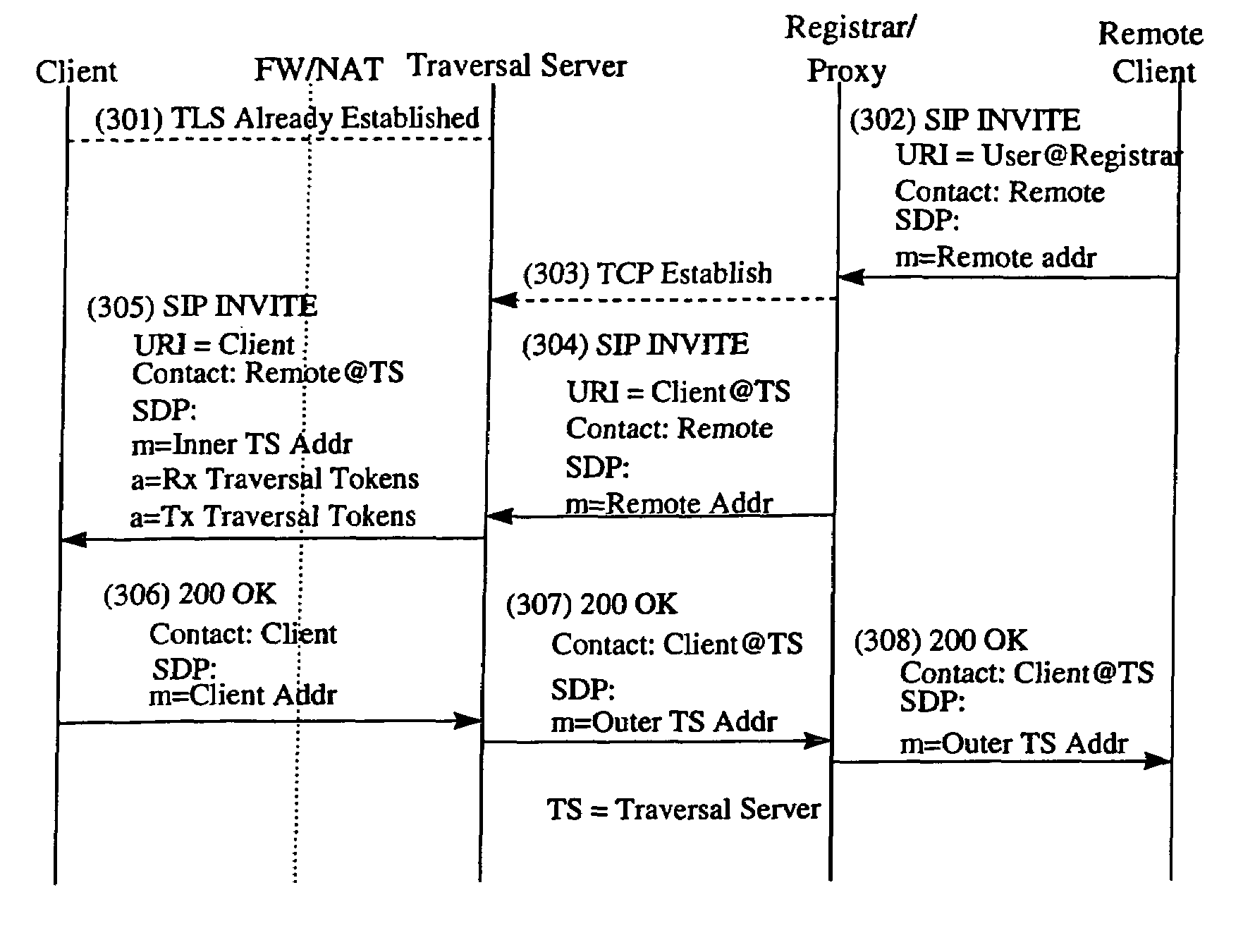Communication systems for traversing firewalls and network address translation (NAT) installations
a communication system and firewall technology, applied in the field of communication systems for traversing firewalls and network address translation (nat) installations, can solve the problems of hampered growth in the market, hampered data and unforeseen technical barriers to the real-world, so as to save costs and achieve the effect of compromising the privacy and data security of individual private networks and saving costs
- Summary
- Abstract
- Description
- Claims
- Application Information
AI Technical Summary
Benefits of technology
Problems solved by technology
Method used
Image
Examples
Embodiment Construction
[0082]Referring now to the drawings, wherein like reference numerals designate identical or corresponding parts throughout the several views.
[0083]I. Embodiments Relating to SIP
[0084]As illustrated in FIG. 1, the firewall and NAT (“FW / NAT”101) separate the network into Inside 103 and Outside 105 address spaces. Typically the Inside address space is a private address space, and the Outside address space is a public address space. However, the Outside address space may be a separate private address space. The firewall and NAT may be made up of multiple devices, but are shown as a single entity here for convenience. Any Inside address (such as a Client Address 107) used for routing that passes between the Inside address space and the Outside address space will the NATted to an Outside address by the NAT. Addresses so modified are called NATted Addresses.
[0085]The Client 109 is located inside the NAT and firewall. The Client Addresses are allocated from the inside address space.
[0086]Th...
PUM
 Login to View More
Login to View More Abstract
Description
Claims
Application Information
 Login to View More
Login to View More - R&D
- Intellectual Property
- Life Sciences
- Materials
- Tech Scout
- Unparalleled Data Quality
- Higher Quality Content
- 60% Fewer Hallucinations
Browse by: Latest US Patents, China's latest patents, Technical Efficacy Thesaurus, Application Domain, Technology Topic, Popular Technical Reports.
© 2025 PatSnap. All rights reserved.Legal|Privacy policy|Modern Slavery Act Transparency Statement|Sitemap|About US| Contact US: help@patsnap.com



